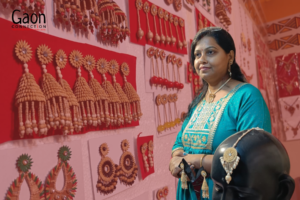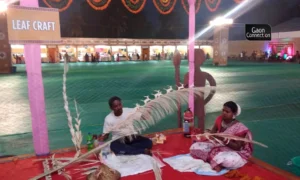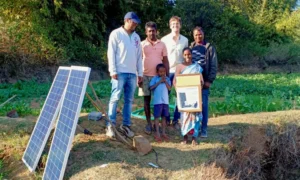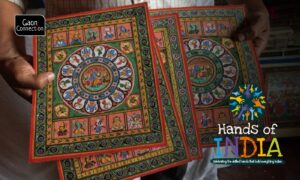One of the challenges in Indian villages is the halfway house approach towards mechanising agriculture. For example, while labour and time are reduced by using a combine harvester, the crop stubble left in its wake breeds problems like the much-discussed crop burning.
Lack of end-to-end technological support and the inability of small farmers to make capital investments for the same creates unique challenges. Village people have been filling these gaps through their ingenuity. Wheat stubble left in the wake of harvesting in May, for instance, is being transformed into consumer goods and artefacts by some women in Uttar Pradesh. Apart from doing a yeoman service in protecting the environment, these women are seeking financial independence through this initiative.
In Kachhona village of the Hardoi district, 92 km away from UP’s capital Lucknow, a bunch of women gather every morning to employ their skills in dealing with a variety of agricultural waste. Someone is skilled in transforming discarded sacks of fertilisers into shopping bags while the other can beautify them with embroidery. There is a clear division of labour here at this village centre of Samuday Sakhi Seva Samiti, a women’s self-help group.
“My husband was an alcoholic and hardly ever kept a job. He died last year. I’ve been able to send my son to college thanks to my earnings here.” Nirmala tells Gaon Connection while giving instructions to other women at the centre. She’s the President and Director of this self-help group. “When HCL launched this initiative, nobody was willing to listen to them. I was then roped in to convince them. I got 40 women from my village together for this project, along with many others from the neighbouring villages. A trainer came from the city to teach us how to create articles from trash and agricultural waste. We know how to make wicker baskets already, but our range expanded with training,” she says.
After ten years of Nirmala’s initial act of gathering women for this meaningful exercise, today, around 2500 women are creating beautiful household goods and artefacts from wheat stubble and discarded sacks. They can even replicate designs shared on WhatsApp.
HCL Foundation set up Samuday Sakhi Seva Samit in 2014 to address the concerns of people living in rural parts of Uttar Pradesh. The Hardoi centre started in 2015. Today, there are 720 villages and 164 gram panchayats within the ambit of this initiative. Around 6 lakh people live in these villages. Apart from agricultural waste management, the initiative is also involved in disseminating new scientific methods to help farmers. Radheshya Maurya, 55, of Terva village is one of the beneficiaries of the foundation’s training module.
“When the people from the foundation first came to our village, we were a little scared. We did not know what kind of people they were,” Maurya says. His farm is inundated with vegetables like capsicum, gourds, chillies, etc. “Only after we got a little comfortable in 2016 did we approach them. We were informed about various varieties of seeds to improve productivity,” he shares. All the farmers in Maurya’s village now receive training from HCL Foundation. Maurya says that now they do not even have to carry their produce to the mandis in big cities. Buyers come to their village to pick up fresh produce. “We couldn’t even save Rs 10000 per season earlier. Now it’s easy to save around Rs 1 lakh,” he adds.


















